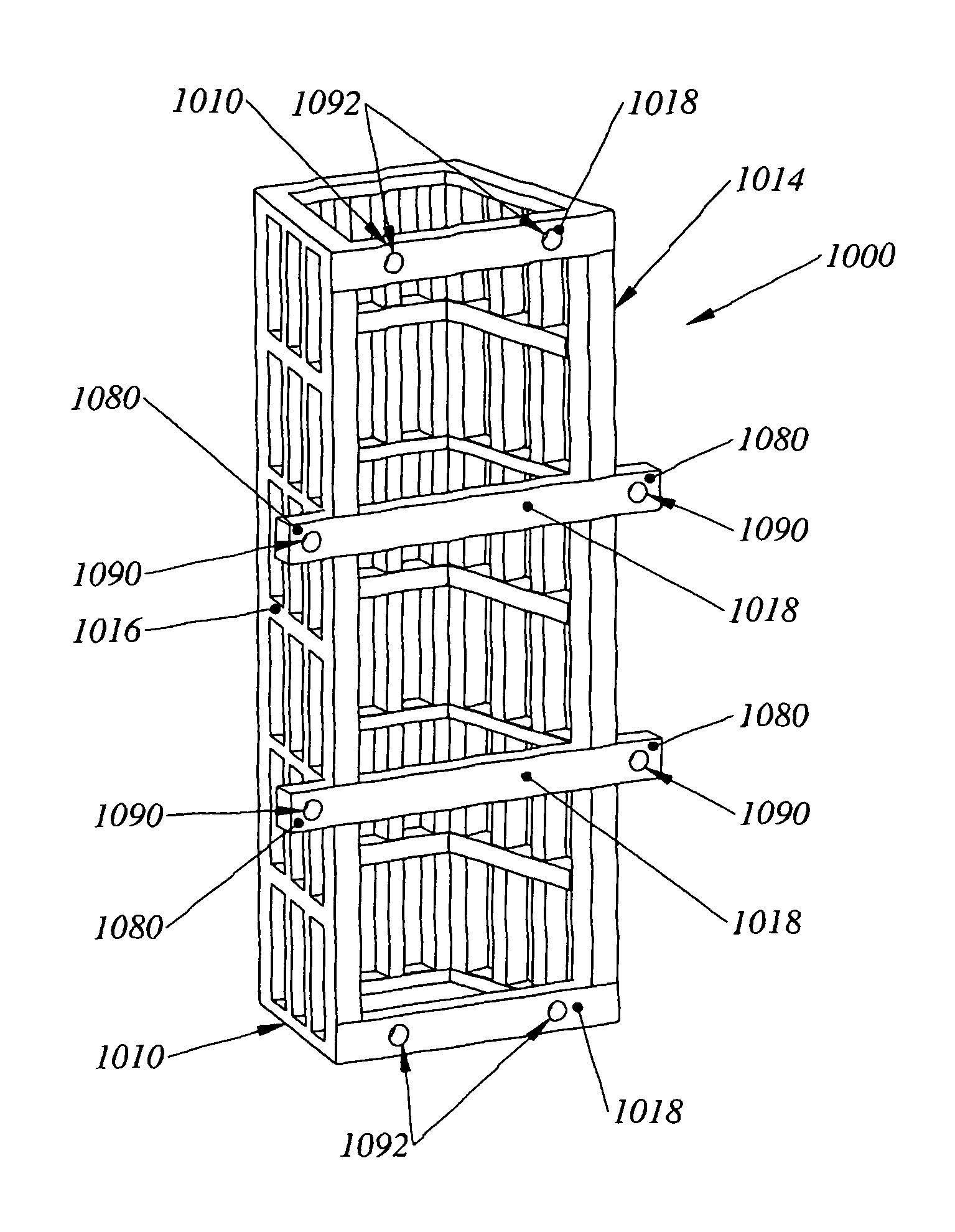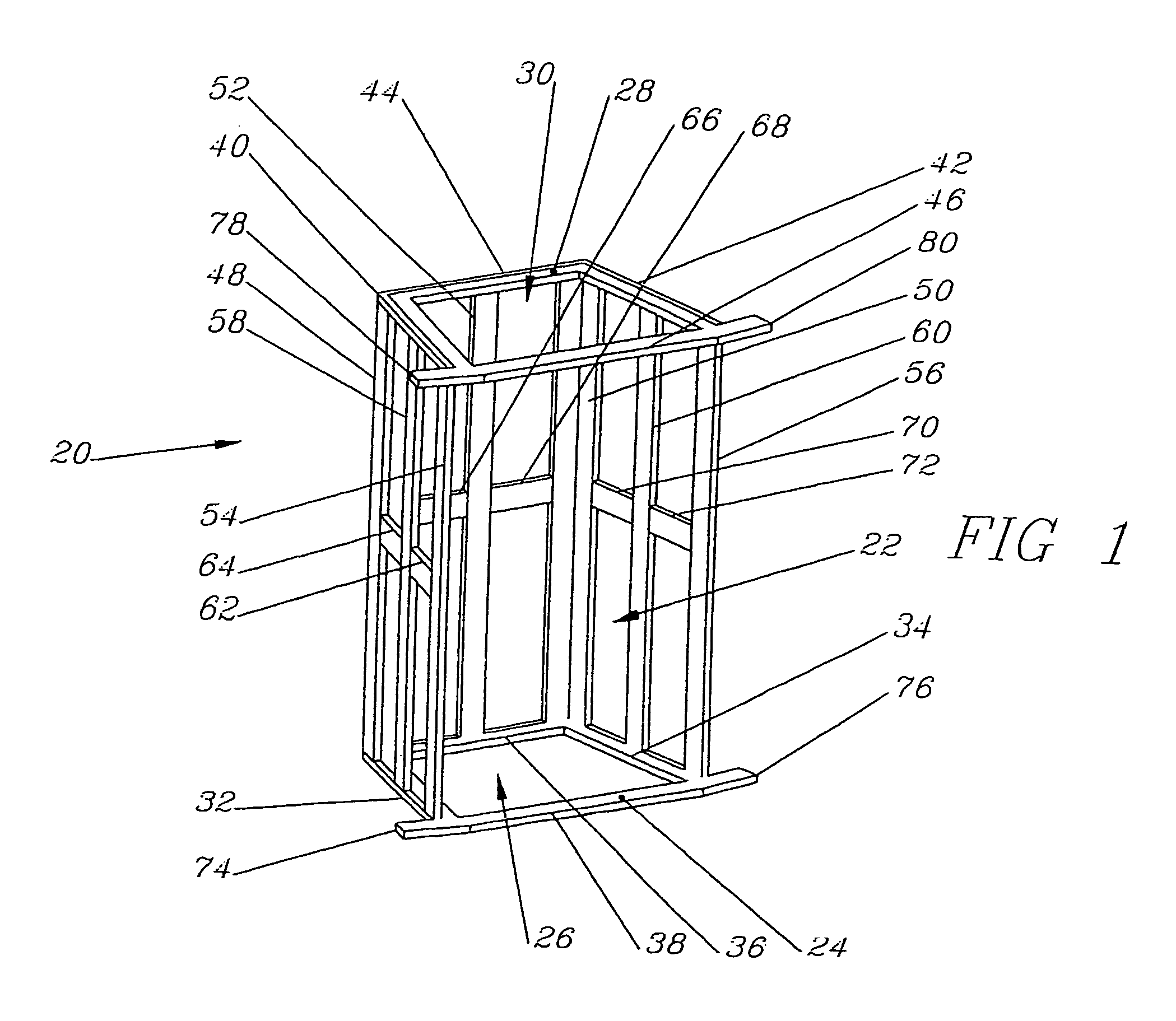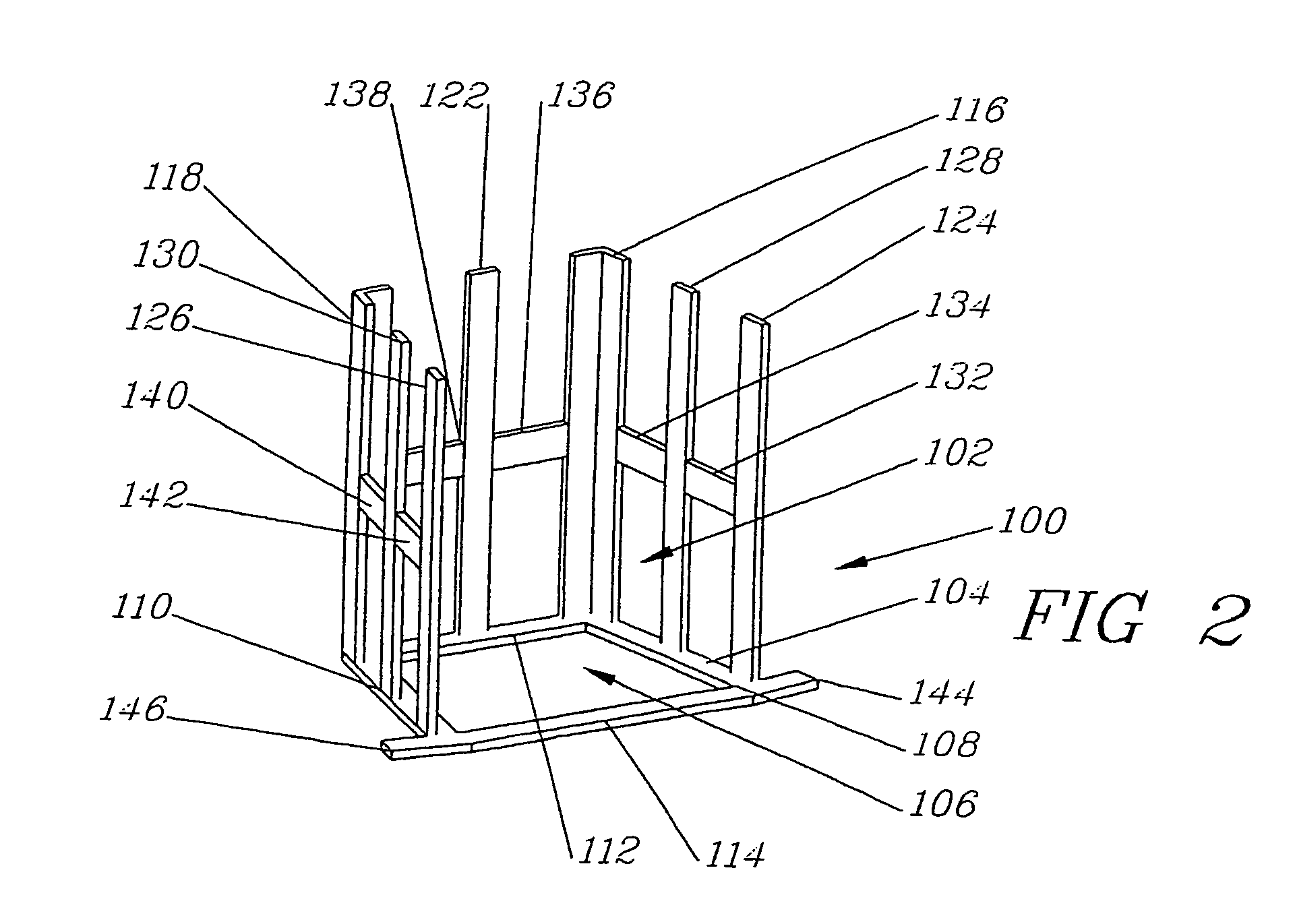Spinal implant with overlay
- Summary
- Abstract
- Description
- Claims
- Application Information
AI Technical Summary
Benefits of technology
Problems solved by technology
Method used
Image
Examples
Embodiment Construction
[0074]Although the disclosure hereof is detailed to enable those skilled in the art to practice the invention, the embodiments published herein merely exemplify the present invention.
[0075]In the most general sense, the present invention is a brace or implant that can be inserted into a cavity of the spinal column. Surgical removal of at least a part of one or more vertebra creates the cavity that will receive the implant. It has been discovered that many embodiments of the current implant can be useful for cervical spine surgeries and can assist in stabilization of the postoperative spine. And many of the preferred embodiments of the present invention are particularly suited for corpectomy or partial corpectomy procedures.
[0076]After insertion of the brace into the cavity, the brace assists in stabilizing the spinal column against rotational movement and also resists the compression forces associated with gravitational forces on the spinal column. Select embodiments of the present ...
PUM
 Login to View More
Login to View More Abstract
Description
Claims
Application Information
 Login to View More
Login to View More - R&D
- Intellectual Property
- Life Sciences
- Materials
- Tech Scout
- Unparalleled Data Quality
- Higher Quality Content
- 60% Fewer Hallucinations
Browse by: Latest US Patents, China's latest patents, Technical Efficacy Thesaurus, Application Domain, Technology Topic, Popular Technical Reports.
© 2025 PatSnap. All rights reserved.Legal|Privacy policy|Modern Slavery Act Transparency Statement|Sitemap|About US| Contact US: help@patsnap.com



